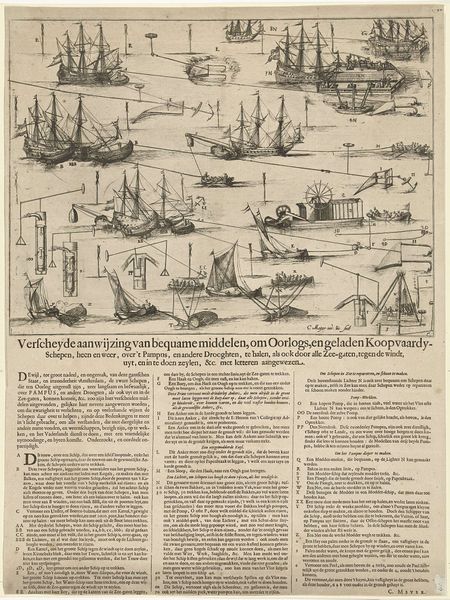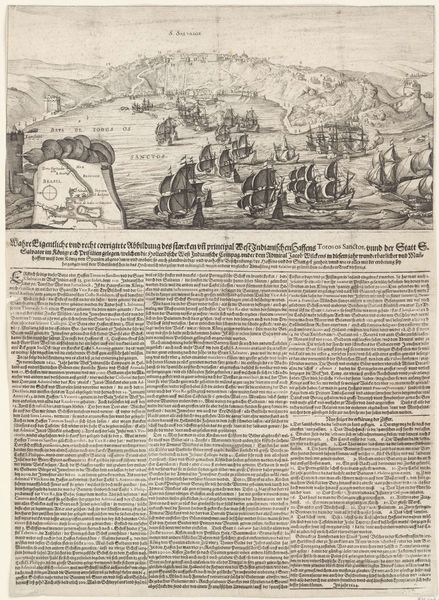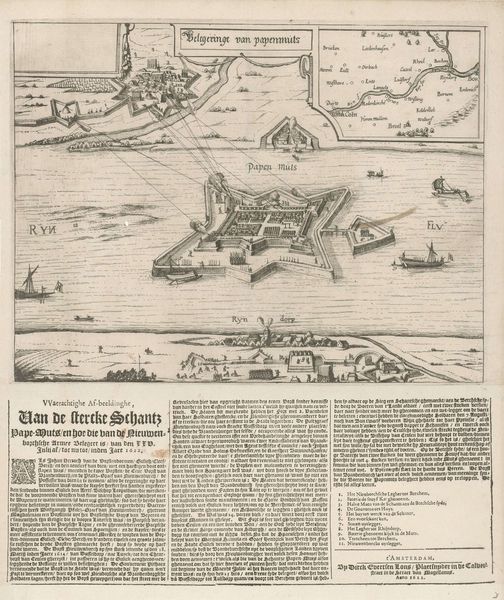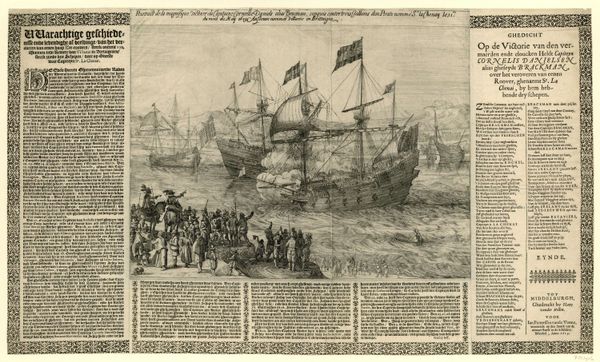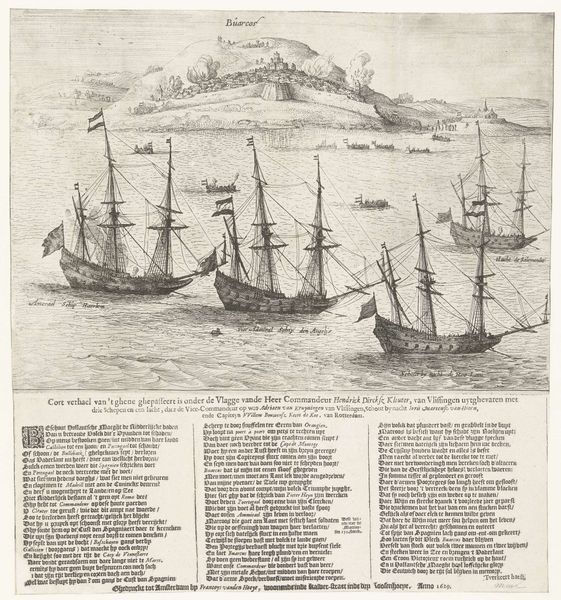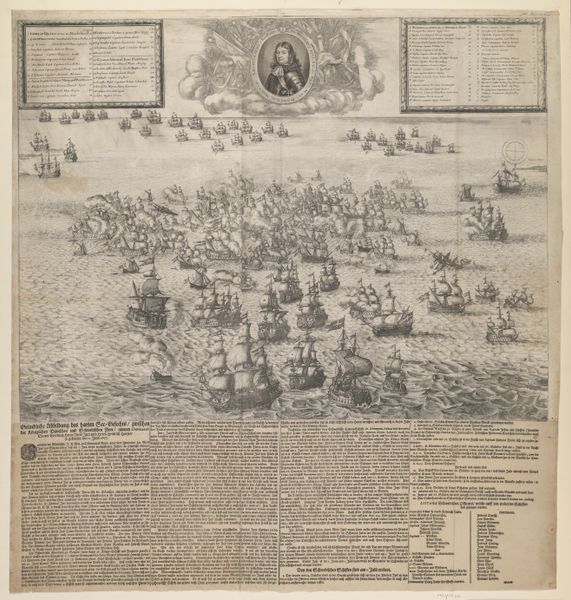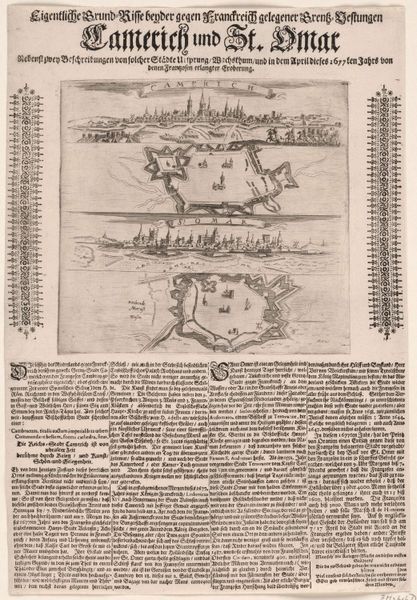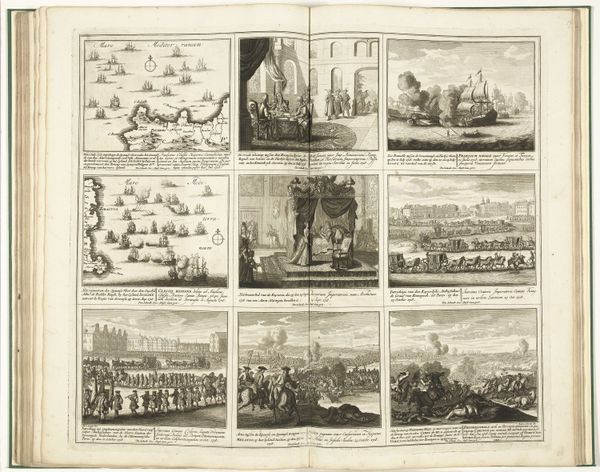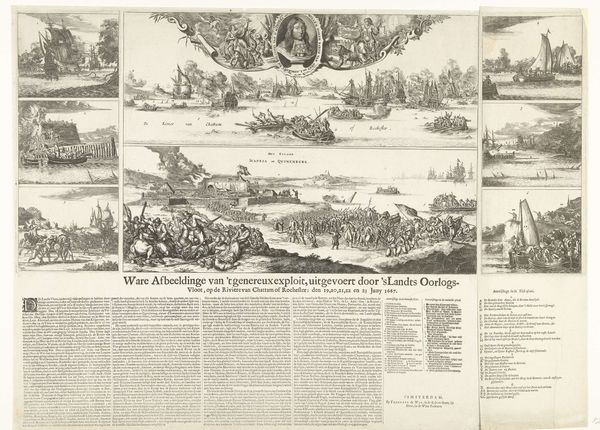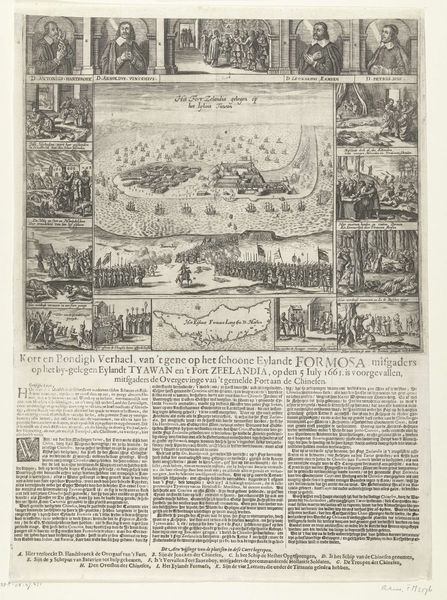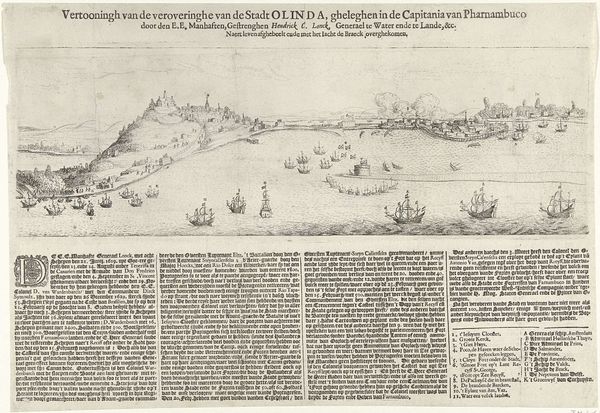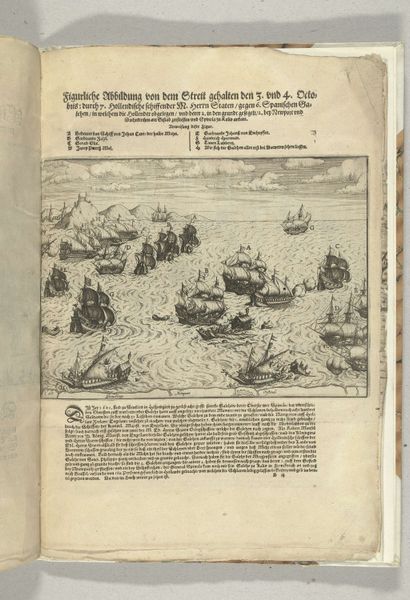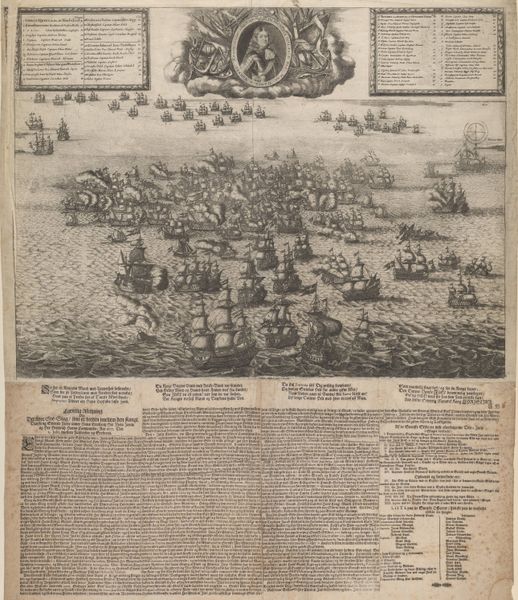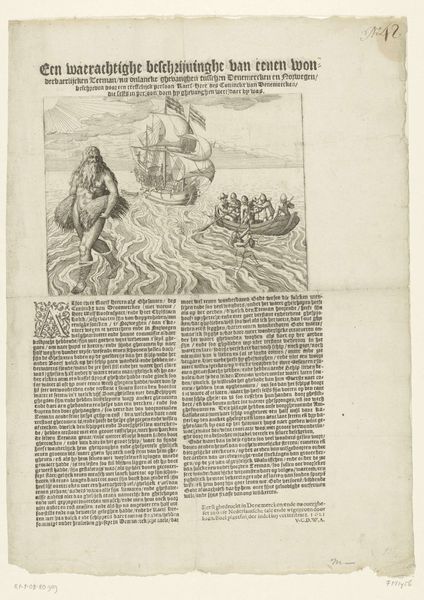
print, engraving
#
dutch-golden-age
# print
#
landscape
#
cityscape
#
engraving
Dimensions: height 423 mm, width 946 mm
Copyright: Rijks Museum: Open Domain
Editor: We're looking at "Gezicht op Olinda vanaf het water, 1630," by Claes Jansz. Visscher, a print depicting a cityscape in Olinda, Brazil. I'm struck by how much textual information is included beneath the image. How does the inclusion of so much text alter the meaning of the print, and what's your reading of the work overall? Curator: Let's look closely at the materials. The fact that this is an engraving, a *print*, meant that information, in image and text, could be reproduced and disseminated widely. We need to ask, who was the audience for these prints? It suggests a burgeoning information economy, where visual and written accounts of colonial exploits are circulated as commodities themselves. Think about the labor involved—the engraver, the printer, and those distributing and consuming the print. What were the Dutch investing in? Editor: So, it's less about the beauty of the landscape and more about the economics of information production and colonial ambition? Curator: Precisely. Notice how the text below dominates the visual field. What story is that text telling, and what purpose does it serve in supporting and bolstering Dutch commercial activities and expansion into Brazil? Also, it’s interesting that those two figures displaying what looks like the central "information" scroll are the most evocative part of the cityscape, aren't they? This creates layers and levels of authority within this artwork. Editor: I hadn’t considered the print as a *produced* object. I see it as much more about the economic machine supporting overseas expansion. Curator: It’s all about material, labor, and the social relations encoded within the production and circulation of images like these. What has this discussion made you reconsider about how you initially looked at the work? Editor: I see it less as a scenic view and more as a historical document, deeply intertwined with the socio-economic context of Dutch colonialism. Curator: Indeed, looking at the labor of its making gives the image much more texture and meaning.
Comments
No comments
Be the first to comment and join the conversation on the ultimate creative platform.
